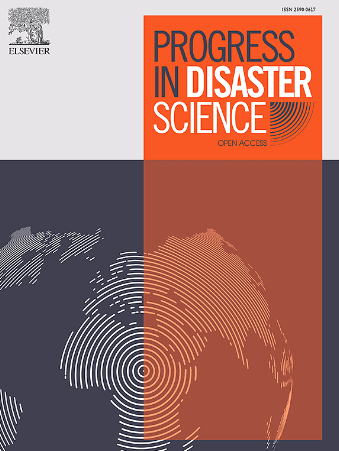Rebuilding lives in Nagaya, a public housing for older victims of the great East Japan earthquake: An interview survey
IF 3.8
Q3 ENVIRONMENTAL SCIENCES
引用次数: 0
Abstract
After the 2011 Great East Japan Earthquake, Soma City in Fukushima Prefecture, sustained extensive damage, and subsequently developed public housing for older victims, namely ‘Soma Idobata Nagaya’. The current interview survey aimed to report the living conditions of such older victims in Nagaya and accordingly suggest strategies for supporting the older population who experience disasters. We conducted semi-structured interviews with 32 Nagaya residents, who relocated there due to the earthquake, and performed a thematic analysis of the data. The development of Nagaya in Soma City after the earthquake enabled older residents to return to their familiar neighbourhoods and provided social security for those vulnerable to disasters. Beyond housing, Nagaya offered psychological stability and supported their independent living in a way they desired. It played a substantial role in rebuilding their lives, allowing them to overcome the hardships of the disaster and reintegrate into the local community. In summary, this study emphasizes the critical role of communities in post-disaster recovery and proposes new perspectives for supporting older adults in such contexts.
在长屋重建生活,这是为东日本大地震的老年受害者提供的公共住房:一项采访调查
2011年东日本大地震后,福岛县的Soma市遭受了广泛的破坏,随后为老年受害者开发了公共住房,即“Soma Idobata Nagaya”。目前的访谈调查旨在报告长屋这些老年受害者的生活状况,并据此提出支持遭受灾害的老年人口的策略。我们对32名因地震而搬迁到长屋的居民进行了半结构化访谈,并对数据进行了专题分析。地震后Soma市长屋的开发使老年居民能够回到他们熟悉的社区,并为易受灾害影响的人提供社会保障。除了住房,长屋还提供了心理上的稳定,并以他们希望的方式支持他们的独立生活。它在重建他们的生活中发挥了重要作用,使他们能够克服灾难的困难,重新融入当地社区。总之,本研究强调了社区在灾后恢复中的关键作用,并提出了在这种情况下支持老年人的新视角。
本文章由计算机程序翻译,如有差异,请以英文原文为准。
求助全文
约1分钟内获得全文
求助全文
来源期刊

Progress in Disaster Science
Social Sciences-Safety Research
CiteScore
14.60
自引率
3.20%
发文量
51
审稿时长
12 weeks
期刊介绍:
Progress in Disaster Science is a Gold Open Access journal focusing on integrating research and policy in disaster research, and publishes original research papers and invited viewpoint articles on disaster risk reduction; response; emergency management and recovery.
A key part of the Journal's Publication output will see key experts invited to assess and comment on the current trends in disaster research, as well as highlight key papers.
 求助内容:
求助内容: 应助结果提醒方式:
应助结果提醒方式:


